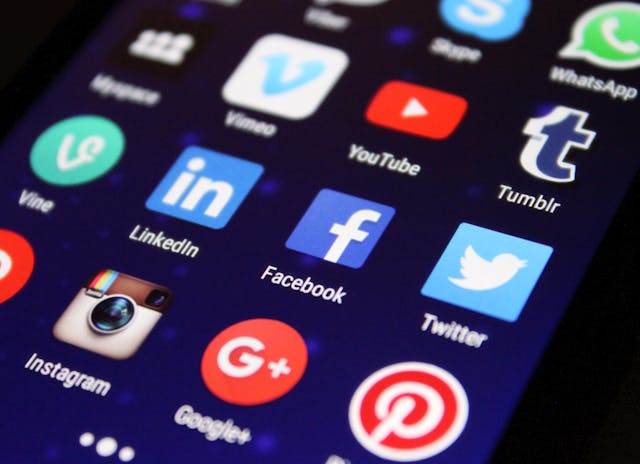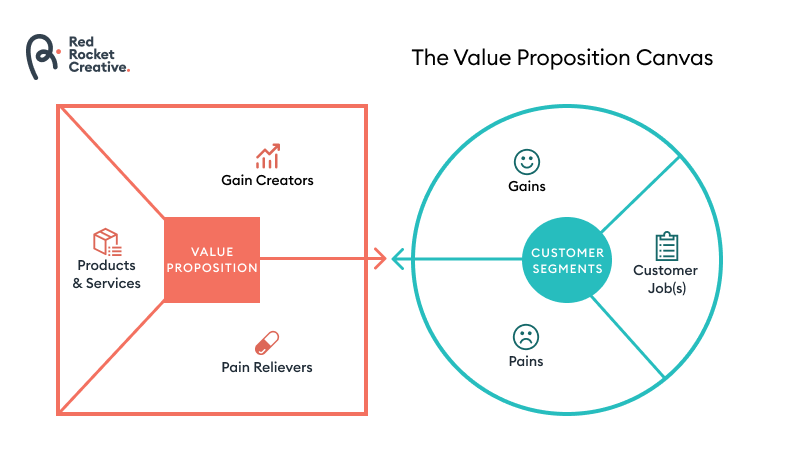Growing a community around any product or service is tough. But it’s even tougher for those in the hydrogen and fuel cell industry, since the technology on offer is new and different—even revolutionary.
How can you inform the marketplace, including potential buyers and policymakers, of the use and benefits of your game-changing technology?
You need to commit to a strategy that:
- Engages potential buyers throughout the long and sometimes complex purchasing process
- Influences policymaker discussions around zero-emission regulations
To establish your company as a thought leader in a revolutionary industry, you need to create content that educates and engages your stakeholders - all of them.
In this post, we’ll look at some fresh content ideas that you can implement to build web traffic and increase your engagement efforts.
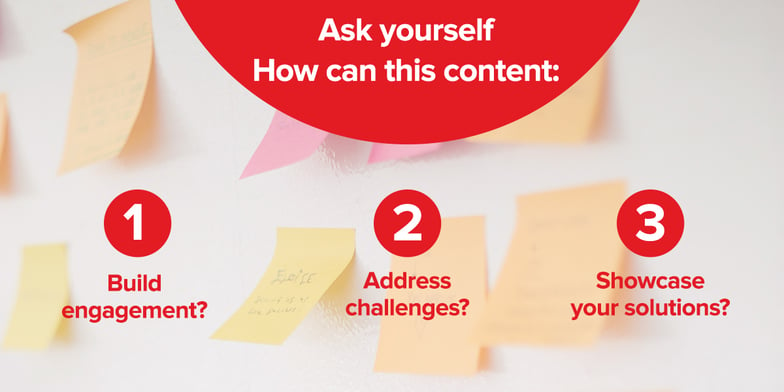
Develop a Content Strategy that Speaks to Your Target Audience
Great content starts with a detailed content strategy. Before you even start creating, ask yourself the following questions:
1. How can this content help build and engage the your community?
2. How can it address the sustainability challenges of your stakeholders or prospects?
3. How can it showcase your technology as a solution to those challenges?
Producing content that addresses these three simple points will help position your company as a thought leader in the zero-emission space.
Here are some topics you can address in your content:
Discuss environmental policy and zero-emission regulations
This is key in joining and influencing policymaker discussions around sustainability. Additionally, this topic can serve as inspiration for potential buyers to consider your technology. Any proposed or implemented zero-emission policy will pressure target industries to seriously evaluate your solution.
Provide insights into news or innovations surrounding sustainability
This topic is where your thought leadership can really shine through. Your company is full of hydrogen and fuel cell technology experts—and the world should hear what they have to say.
Discussing technical innovations, or sharing deeper insight into current events will show your stakeholders that you’re an authority at the forefront of your industry.
Discuss the damaging effects of fossil fuel use
To avoid “preaching to the choir”, it’s essential that you reach people who aren’t yet familiar with, or sold-on fuel cell technology.
Target industries that would benefit from your technology, but need more information about it before committing. Share stories on how the technology can benefit their company, their workers, and their communities at large. In today's social climate and especially with the impacts of COVID-19, the health benefits angle is essential to include in your messaging.
Additionally, corporate social responsibility and sustainability mandates are more important now than ever. Share expertise on how embracing a hydrogen and fuel cell solution can benefit a company’s reputation, its bottom line and overall public perception.
Don’t shy away from the cost discussion
While you shouldn’t share the cost of your particular solution in your blogs, you should definitely address cost as a subject. While sustainability is obviously a major selling point of fuel cell technology, many stakeholders are concerned about the technology’s higher capital cost, relative to well-established fossil fuel power.
Be honest about the situation, while sharing what your company, and others are doing to bring the cost down. This extends way beyond the actual manufacturing costs, but the societal costs of poor health due to fossil fuel particulates in the air.
Now, let’s take a look at six types of content you can publish to address the above topics.
6 Types of Content to Help Showcase Your Thought Leadership and Engage Stakeholders
We've put together a list of six content types that can help your hydrogen and fuel cell company showcase it's expertise and thought leadership. The advantage to creating content of this type is that prospective clients will be engaged by your content
The six content types are:
(Click one of the types above to jump right to that section.)

1. Blogs
Publishing content educates stakeholders and boosts your web traffic. It also showcases your company’s thought leadership, which can build authority in your area of expertise.
We’ve helped our client, Ballard Power Systems, build a thriving blog that exemplifies this.
Together, we've developed rich and relevant blog content by:
- Interviewing industry experts
- Explaining how the technology can be adopted
- Illustrating the growth of the technology and how it positively impacts air pollution and climate change
- And much more
This helps increase public awareness and build a community around fuel cell technology.
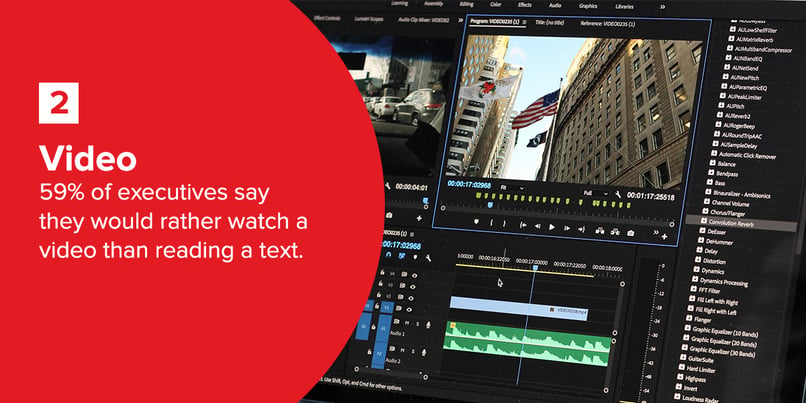
2. Videos
Videos provide a quick, engaging way to share your company’s story with stakeholders. In fact, 59% of executives say they'd rather watch a video than read text. To create a great video, first make sure your content idea fits into both your overall content strategy and business objectives.
You’ll also want to research what kinds of videos do well on the platform(s) you’re using. On social media, for example, short, attention-grabbing videos tend to get the most engagement. A story highlighting new zero-emission regulations and why your solution is needed to meet them, can be simply presented through this type of video.
The videos can then prompt viewers to visit your website, bringing in more traffic to pages which explain your solution in depth. On a website, longer, more in-depth content works well. For example, your website is an ideal place to publish detailed videos about your products and services, or to showcase video testimonials.
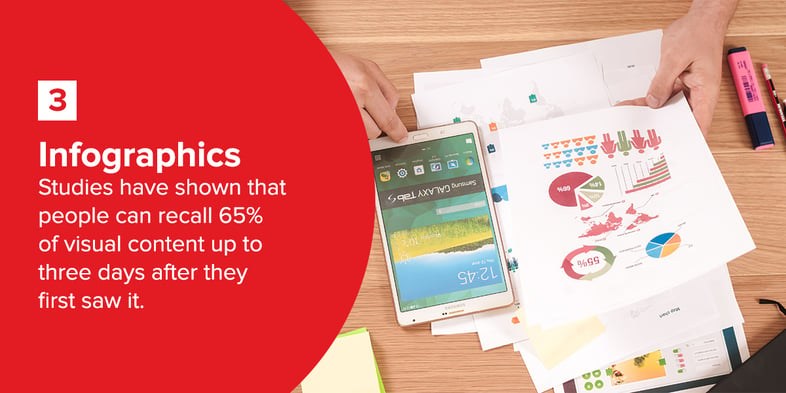
3. Infographics
Visuals are powerful! Studies have shown that people can recall 65% of visual content up to three days after they first saw it. This is one reason why infographics make such strong content.
Not only do they distill complex information into an easily digestible format, but they’re also highly shareable. Infographics are shared 3 times as often as any other digital content ideas on social media—making them a perfect way to improve your online influence.
They should be simple and contain no more than 10 data points around a single theme. That way, your audience can better absorb the information, and you’ll succeed in getting your message across.
You can create graphics that:
- tell stories about sustainability issues, for example air pollution
- compare fuel cell technology with other types of power sources
- give an overview of your technology and how it works
Need some inspiration? Here’s an example of an infographic we created with Ballard Power Systems, comparing battery electric buses and fuel cell electric buses.

4. Gated Content
Policy and decision makers are looking for information online to help them make informed decisions. Often these people are overwhelmed by research material that isn’t relevant or helpful in answering questions to their problems.
Determine what kind of content will be of value to them, then create it while being conscious of their challenges and concerns.
This type of comprehensive content can be developed in many formats, including:
- Industry reports
- Original data and research
- Whitepapers
- Interactive content
But, why would you develop such extensive content, and give it away for free?
First of all, this content helps your potential buyers and the involved stakeholders get answers to questions they may have about the industry, the application, or your product.
In fact, the majority of B2B purchase decisions are now made online, and buyers often make them before ever engaging with your company or sales representative. According to a report by Forrester, 68% of B2B buyers prefer to research independently online before making a purchase.
Secondly, this type of content is only accessible if visitors fill out a form. You’re able to ask for specific information on your forms, such as a visitor’s:
- Industry
- Work role
- Key challenges
This can support you in developing a successful, personalized nurturing strategy that will further engage them.
The best gated content is data-rich and informative. It’s high-quality material that addresses a real challenge for your prospects or stakeholders. The more valuable your content, the more likely visitors will download it.
(If creating this kind of in-depth content sounds like a lot of work, that’s because it is! But don’t worry. That’s where a content marketing agency like us can help.)

5. Webinars
Webinars are one of the most popular types of content on the web.
They’re also one of the most comprehensive, letting you cover topics in greater depth than you may be able to otherwise. Highly interactive, webinars are excellent for building engagement because they allow viewers to ask you questions in real time.
And during this time of physical distancing, where trade shows are (temporarily) a thing of the past, you'll need new ways to engage your buyers in a face-to-face way.
There are a number of ways to do a webinar. The most engaging ones are co-hosted with an expert, or panel of experts in your industry. You could discuss the latest industry trends, current news and events, or technical innovations.
On top of that, as the cost of fuel cell technology is a concern for many stakeholders, webinars are a great medium for sharing what the industry, and your company, are doing to bring costs down.
As with any content, always make sure your webinars are targeted to your audience. Different audiences are interested in completely different topics, and your webinars should reflect this.

6. Case Studies
Establishing credibility is especially important for hydrogen and fuel cell companies, since the technology you’re offering is relatively new. Both stakeholders and prospective clients will want to see results before they invest in or buy from your company. Showcasing actual results you’ve had with other partners is one of the most effective ways to do this.
Your case studies can:
- Provide preliminary data on any proof-of-concept projects you’ve launched
- Show the results your product helped achieve in active real-world applications
The best case studies show how your products or services have helped your partners overcome their challenges.
Additionally, it’s an excellent idea to include testimonials in your case studies. Testimonials are very effective and can take many forms, from a simple quote to a short video.
Bonus: Build Relationships with Stakeholders on Social Media
Once you’ve published some top-notch content on your website, social media is an excellent place to share it. Getting social also lets you connect with stakeholders and the wider hydrogen and fuel cell community.
Follow and interact with key people on Twitter and LinkedIn. Comment on any posts that resonate with your company values and mission. Consider joining hydrogen or clean energy-focused LinkedIn or Facebook groups.
Spend time every day connecting with stakeholders on social media. The bigger your social media network, the more people will share, read, and engage with your content—as well as with your company.
For example, we helped Ballard Power Systems develop a thriving community of over 30,000 fuel cell enthusiasts, influencers, and stakeholders who tweet, post, and comment on a daily basis.
Next Steps
So, now that you know about these six content ideas, how do you put them into practice?
We recommend easing into it.
Try a blog or video, and monitor any uptick in engagement and website visits. Over time, you can incorporate multiple touch points into your online engagement strategy, giving content a central role in your marketing plan.
No matter where you start, make sure your content provides solutions that fit into stakeholders’ visions for the future.
Show prospects how your zero-emission solution will help their communities achieve their sustainability goals, and you’ll build strong, mutually beneficial partnerships—now, and for years to come.
If you’d like to learn more about how to use content to educate, engage and empower your stakeholders, download our report: 7 Essential Facts About Inbound.
Holly Thomson
Digital Marketing Strategist Holly loves communicating with others, sharing information, and building connections. With creativity and technical skill, she uses her storytelling talents to communicate effectively with key audiences. One of her favourite things is helping clients meet their goals, whether that means increasing online influence, acquiring more leads, or growing a customer base.





